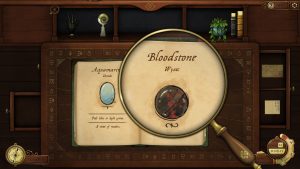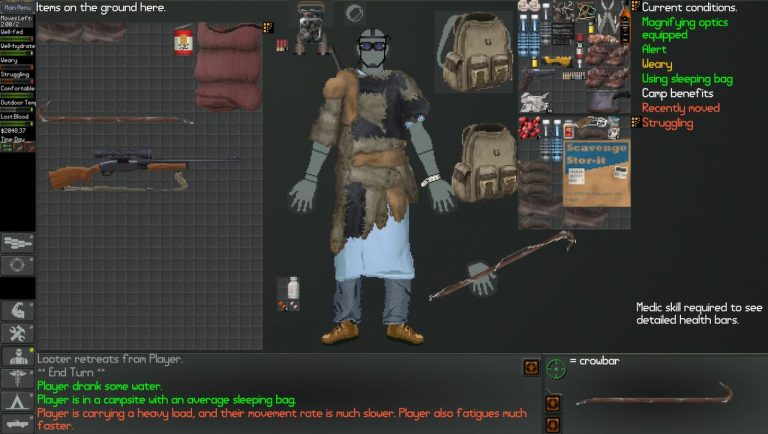The original Fallout’s lead developer Tim Cain has been sharing his memories about the early games in the series for a while over on his Youtube channel. Cain’s had a long and eclectic career (the only sequel he’s ever worked on, funnily enough, is Fallout 2) and also seems to have a razor-sharp memory for details and discussions that happened decades ago. His latest video concerns the specific dating of Fallout, which is set in Southern California in 2161, 84 years after a nuclear war between China and the US devastated the globe.
Cain begins with the quietly stunning revelation that Interplay threatened to sue him after he left the company, as a result of which he destroyed a treasure trove of the earliest Fallout material, from notes on concept meetings to various builds. This certainly tracks with what we already know about Interplay in the early 2000s, which was a legally aggressive and rapacious company (it tried to bully Valve at one point: Valve annihilated them thanks to one hero intern). And clearly Cain just didn’t want the hassle of that kind of fight from his old employers.
“I remember taking notes but I have gone through everything, I’ve even digitised my handwritten notes that I had at home [but] it was probably destroyed because Interplay threatened me with a lawsuit after I left,” says Cain. “So I destroyed all the stuff I had at home, I took a CD that had Fallout code, journal code, it had the initial graphics library that I built it all from and it probably had digitised meeting notes on it: That thing is destroyed, it’s done.”
Thanks for that one, Interplay (Cain does mention he wasn’t the only person with access to certain of these documents, so who knows). But the subject today is the setting and specifically the timeline that Black Isle went for, and what that would mean for things that were going to be important for the game.
“I remember one of the first things we talked about was we didn’t want anyone in the Vault to really know what was outside,” says Cain. “We wanted it to be blank slate tabula rasa, the player and the character don’t know what they’re getting into. That meant most of the people from the war probably had to be dead. We didn’t want anyone who’d been outside the Vault to remember being outside the Vault.
“Putting it 84 years in the future meant if there were any people in the Vault in their late 80s or older who could possibly remember what was outside the Vault, these people were sent out as the sole hope of Vault 13 to find that water chip.”
Cain goes on to say that Ghouls and Mutants may be old enough to remember pre-War, but the former go feral while the latter aren’t in the best mental state.
“So that’s how we first started picking a time range, like ‘let’s have it so far in the future that most people pre-war are dead’,” recalls Cain. “At the same time we didn’t want it too far in the future, we still wanted certain items usable, I remember we talked about being able to find canned goods, and even though canned goods only say they’re good for 10 or 20 years, they’re really good unless they start to expand.
“So if you find a can of beans and it seems like the seal’s good and it’s not swelling, it’s probably good to eat. So we wanted canned goods which would limit us to less than a century for what we could research back then.”
I wholly admire Cain’s refusal to adhere to shelf dates, but humour aside this shows how deeply the team was thinking about a date rather than just picking a random number from the future. The balance was in setting it far enough out that pre-war items important to the overall design could still, conceivably, exist in this setting.
“We also wanted the player to be able to find guns and ammo,” says Cain. “We were conflicted over how long those lasted. Apparently a gun that had been well-maintained and oiled and kept in a case, that might be good for centuries, especially if it didn’t get wet. But ammo apparently goes bad quickly. But there was conflicting information we found back in the 90s, some people said it would be good for decades, others said ‘no, as soon as gun powder gets a little moisture in it it’s no good.'”
Cain says this is why they invented groups like the gun runners, who sell you ammo in the game’s hub, and they tie into the theme by “finding old bullet casings and re-filing them with newly made gunpowder, and keeping gunpowder a secret.”
Another important element: Things still had to function. Well, some of them. “We also didn’t want it so far in the future that batteries and atomic powered generators weren’t working anymore,” says Cain. “We wanted some places to still have power, we wanted doors to open, force fields to work, things like that, so again we had a limit on how far in the future it could be.
“We wanted structures to be mostly ruins, and of course atomic bombs would take care of that, but we wanted them still standing. So atomic bombs level buildings. Buildings far away from the bomb site would still be there and ruined but would probably quickly fall apart because they were exposed to the elements. But we wanted structures for the player to find which meant not too far in the future.”
Cain goes on to talk a little about the locations the team discussed, and how some of them were designed to imply Vaults had opened since the war. “The player Vault, 13, was designed to be a long-term Vault,” says Cain, “but not all of them were, and if you’ve played Fallout 2 you find out that Vault City was created by a Vault that did exactly what it was supposed to: It opened after a certain amount of time, they had a GEK, they put together a city, these were all experiments and that one was to test whether a Vault could be short-term, stable, and reconstruct a civilisation after a war.”
Back to Fallout and Cain namechecks Shady Sands as a place built-up by former Vault-dwellers, and a village that didn’t exist pre-war. This had an additional layer of narrative importance: Places that had generational memory, and people who had no idea what life in a Vault was like.
“We wanted factions to have time to form, we wanted the player to react to a bunch of factions,” explains Cain. “If it was right after the war or so soon that people were still struggling to scrape by there wouldn’t be a lot of factions. But if you give it enough time a lot of these factions can form, especially because some of these towns are generational in the sense that a lot of the people you’re meeting there grew up in that town, they don’t remember coming from a Vault, they don’t remember the war, this is the entire life they’ve had, so you have people forming factions because this is life, this is what it’s like, they have no memory of what was.”
So the general idea was hitting that sweet spot of being far enough ahead that the pre-war era was not a living memory, but relics of it persisted, and the new world had had enough time for new social structures to form.
“So we had that constraint,” ends Cain, “we talked about it for a long time and I remember we talked about 60-70 years and I think we ended up in the 80s just to basically push away anyone who could be alive. Anyone who was alive was not going to be out on an adventure. So that’s how we arrived at that.
“We wanted it to be post-apocalypse, but not so far ‘post’ that everything’s collapsed and everyone’s dead. And not so soon after that everyone’s still just scraping by.”
If you like Fallout then Tim Cain’s YouTube channel is one of the most interesting resources out there, and will leave you with nothing but respect for the Black Isle team’s extraordinary level of thoughtfulness about what it was making. He’s a great one for trivia too, like the game being planned to have over 1,000 Vaults, the “true purpose of Vaults“, or his involvement in the cancellation of Interplay’s Fallout 3 (which he says you wouldn’t have liked anyway).












